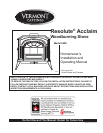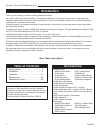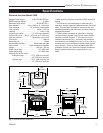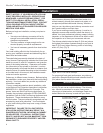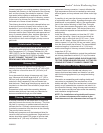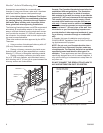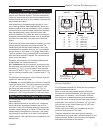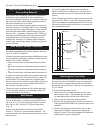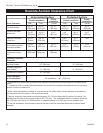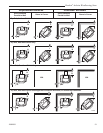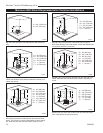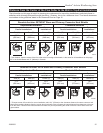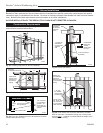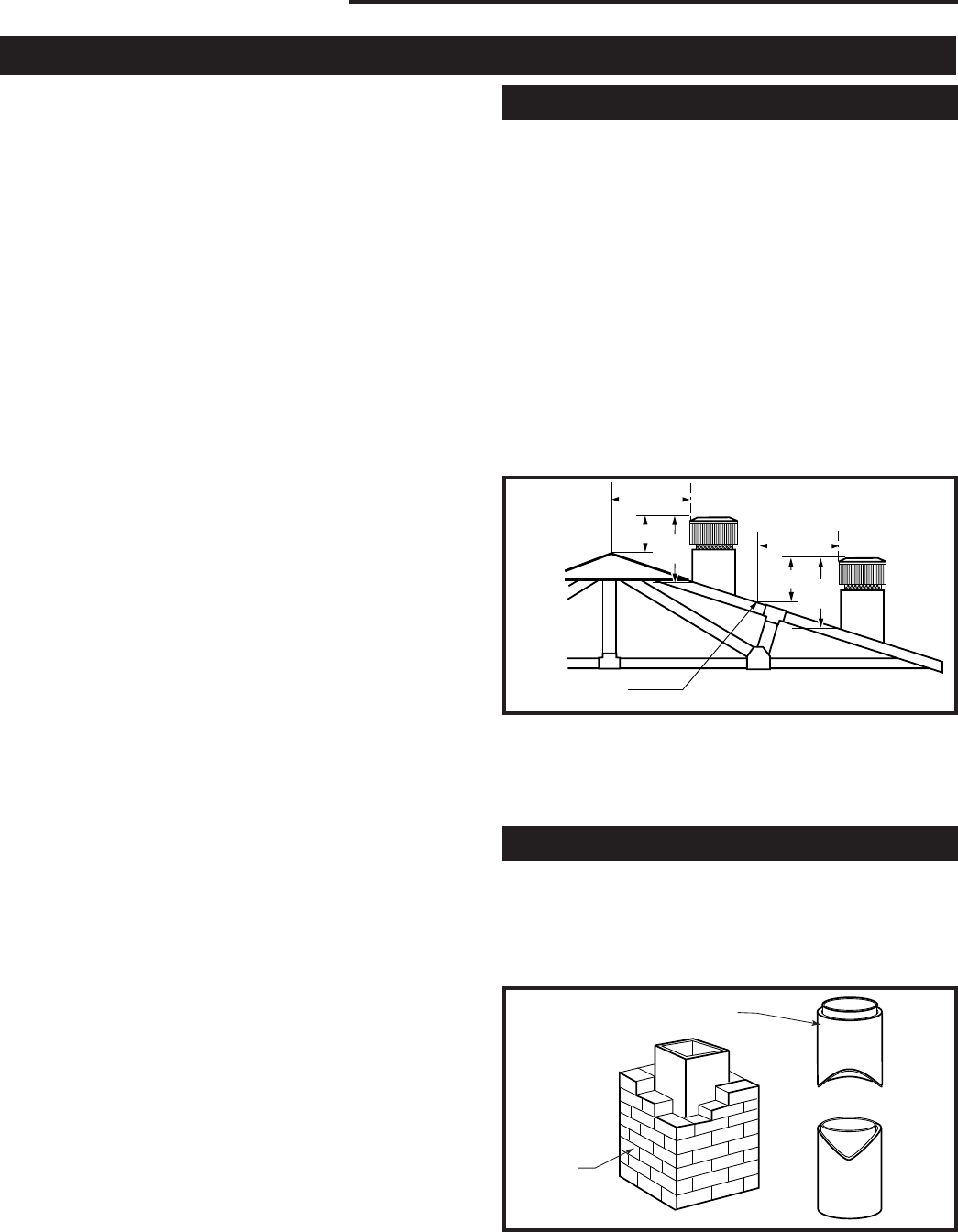
4
Resolute
®
Acclaim Woodburning Stove
2000893
Before you begin an installation, review your plans to
see that:
• Your stove and chimney connector will be far
enough from combustible material to meet all
clearance requirements.
• The floor protector is large enough and is con-
structed properly to meet all requirements.
• You have all necessary permits from local author-
ities.
Your local building official is the final authority for ap-
proving your installation as safe and determining that it
meets local and state codes.
The metal label permanently attached to the back of
every Vermont Castings stove indicates that it has been
tested to current UL and ULC standards, and gives the
name of the testing laboratory. Clearance and installa-
tion information is also printed on the label. Local au-
thorities generally will accept the label as evidence that,
when the stove is installed according to the information
on the label and in this manual, the installation meets
codes and can be approved.
Codes vary in different areas, however. Before starting
the installation, review your plans with the local building
authority. Your local dealer can provide any additional
information needed.
For any unresolved questions about installation, refer
to the National Fire Protection Association’s publication
ANSI/NFPA 211–1988 Standard for Chimneys, Fire-
places, Vents and Solid Fuel Burning Appliances. In
Canada, the equivalent publication is CSA CAN-B365,
Installation Code for Solid Fuel Burning Appliances and
Equipment. These standards are the basis for many
national codes. They are nationally recognized and are
accepted by most local authorities. Your local dealer
or your local building official may have a copy of these
regulations.
Your Resolute Acclaim may be connected either to a
sound masonry chimney that meets local codes, to a
relined masonry chimney that meets local codes, or to
an approved prefabricated metal chimney. Whatever
kind you use, the chimney and chimney connector must
be in good condition and kept clean.
If you use an existing masonry chimney, it must be in-
spected to ensure safe condition before the stove is in-
stalled. Your local professional chimney sweep, building
inspector, or fire department official will be able to make
the inspection or to direct you to someone who can.
The chimney should extend at least 3’ (914 mm) above
the highest point where it passes through a roof, and at
least 2’ (610 mm) higher than any portion of a building
within 10’ (3m). (Fig. 2)
For proper draft and good performance, any chimney
used with a Resolute Acclaim should extend at least 16’
(5m) above the flue collar of the stove.
An inspection of the chimney must confirm that it has
a lining. Do not use an unlined chimney. The chimney
also should be examined for cracks, loose mortar,
other signs of deterioration, and blockage. Repair any
defects before the chimney is used with your stove.
ST241
chimney types
12/13/99 djt
A prefabricated doube-wall
insulated chimney
A tile-lined
masonry
chimney
ST241
Standard chimney types.
2’ Min.
2’ Min.
3’
Min.
0 To 10’
3’
Min.
0 To 10’
AC617
RLTSKC8
2/11/98
Reference Point
AC617
The 2’-3’-10’ rule for chimneys.



